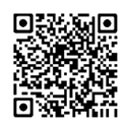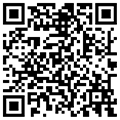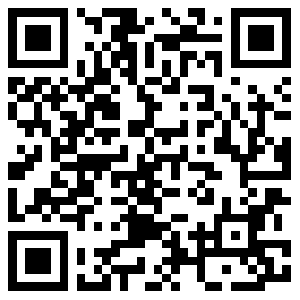不明原因栓塞性卒中后再发缺血性卒中的特点
2020年07月12日 8139人阅读 返回文章列表
Characteristics of Recurrent Ischemic Stroke After Embolic Stroke of Undetermined Source: Secondary Analysis of a Randomized Clinical Trial.
Veltkamp R,et al JAMA Neurol 2020 Jul 06MORE
Abstract 翻译
Importance 未确定来源的栓塞性中风(ESUS)的概念统一了基于神经影像学,定义的最少诊断测试集和排除某些原因的隐源性中风的子组。尽管每年卒中复发率为5%,但对于ESUS复发性卒中的病因学知之甚少。
Objective 为了确定ESUS后复发性缺血性卒中的卒中亚型,探讨各类别中与治疗分配的相互作用,并检查合格的ESUS与复发性缺血性卒中在脑部位置的一致性。
Design, Setting, and Participants NAVIGATE-ESUS试验是一项从2014年12月23日至2017年10月5日进行的随机临床试验。该试验比较了利伐沙班和阿司匹林在近期ESUS患者中的疗效和安全性(n = 7213)。缺血性卒中在7213名患者中的309名患者中由不愿进行治疗分配的评判员确认,并且被当地研究者分类为ESUS或非ESUS(即,心脏栓塞,动脉粥样硬化,腔隙性,其他确定的原因或测试不足)。排除了五例在没有神经影像学或尸检的情况下不能定义为缺血性或出血性复发性中风的患者。该次事后分析的数据已于2019年3月至2019年6月进行了分析。
Interventions 患者被随机分配接受利伐沙班(15毫克/天)或阿司匹林(100毫克/天)。
Main Outcomes and Measures 复发性ESUS与卒中特征的关联。
Results 共有309名患者(205名男性[66%];平均[SD]年龄为68 [10]岁)在中位随访11个月(四分位间距[IQR],为12个月)期间发现了缺血性中风(年率(4.6%)。 39例患者(13%)的病因学诊断诊断不足。在270个可分类的缺血性卒中中,有156例(58%)为ESUS,有114例(42%)为非ESUS(37例[32%]心脏栓塞,26例[23%]动脉粥样硬化,35例[31%]腔隙性和16例[14%] ]其他确定的原因。在27例复发性缺血性卒中患者中发现房颤,并与较高的发病率(改良的Rankin量表评分2 [IQR,3] vs 0(IQR,1])和死亡率(15%vs 1)相关。治疗组之间亚型的复发风险没有显着差异;对于定性和复发性卒中,梗死的位置在左半球(分别为46%和54%)比右半球更多(40分别为%和37%)或脑干或小脑(分别为14%和9%)。
Conclusions and Relevance 在对随机临床试验数据的二次分析中,ESUS之后大多数复发性中风是栓塞性的,来源尚不确定。与房颤相关的复发很少,但更多的是致残和致命的。进行更广泛的研究以确定栓塞来源对于有效的抗血栓形成策略很重要。
Trial Registration ClinicalTrials.gov标识符:NCT02313909。
以上为中文翻译
Importance The concept of embolic stroke of undetermined source (ESUS) unifies a subgroup of cryptogenic strokes based on neuroimaging, a defined minimum set of diagnostic tests, and exclusion of certain causes. Despite an annual stroke recurrence rate of 5%, little is known about the etiology underlying recurrent stroke after ESUS.Objective To identify the stroke subtype of recurrent ischemic strokes after ESUS, to explore the interaction with treatment assignment in each category, and to examine the consistency of cerebral location of qualifying ESUS and recurrent ischemic stroke.Design, Setting, and Participants The NAVIGATE-ESUS trial was a randomized clinical trial conducted from December 23, 2014, to October 5, 2017. The trial compared the efficacy and safety of rivaroxaban and aspirin in patients with recent ESUS (n = 7213). Ischemic stroke was validated in 309 of the 7213 patients by adjudicators blinded to treatment assignment and classified by local investigators into the categories ESUS or non-ESUS (ie, cardioembolic, atherosclerotic, lacunar, other determined cause, or insufficient testing). Five patients with recurrent strokes that could not be defined as ischemic or hemorrhagic in absence of neuroimaging or autopsy were excluded. Data for this secondary post hoc analysis were analyzed from March to June 2019.Interventions Patients were randomly assigned to receive rivaroxaban, 15 mg/d, or aspirin, 100 mg/d.Main Outcomes and Measures Association of recurrent ESUS with stroke characteristics.Results A total of 309 patients (205 men [66%]; mean [SD] age, 68 [10] years) had ischemic stroke identified during the median follow-up of 11 (interquartile range [IQR], 12) months (annualized rate, 4.6%). Diagnostic testing was insufficient for etiological classification in 39 patients (13%). Of 270 classifiable ischemic strokes, 156 (58%) were ESUS and 114 (42%) were non-ESUS (37 [32%] cardioembolic, 26 [23%] atherosclerotic, 35 [31%] lacunar, and 16 [14%] other determined cause). Atrial fibrillation was found in 27 patients (9%) with recurrent ischemic stroke and was associated with higher morbidity (median change in modified Rankin scale score 2 [IQR, 3] vs 0 (IQR, 1]) and mortality (15% vs 1%) than other causes. Risk of recurrence did not differ significantly by subtype between treatment groups. For both the qualifying and recurrent strokes, location of infarct was more often in the left (46% and 54%, respectively) than right hemisphere (40% and 37%, respectively) or brainstem or cerebellum (14% and 9%, respectively).Conclusions and Relevance In this secondary analysis of randomized clinical trial data, most recurrent strokes after ESUS were embolic and of undetermined source. Recurrences associated with atrial fibrillation were a minority but were more often disabling and fatal. More extensive investigation to identify the embolic source is important toward an effective antithrombotic strategy.Trial Registration ClinicalTrials.gov Identifier: NCT02313909.

 浙公网安备
33010902000463号
浙公网安备
33010902000463号



